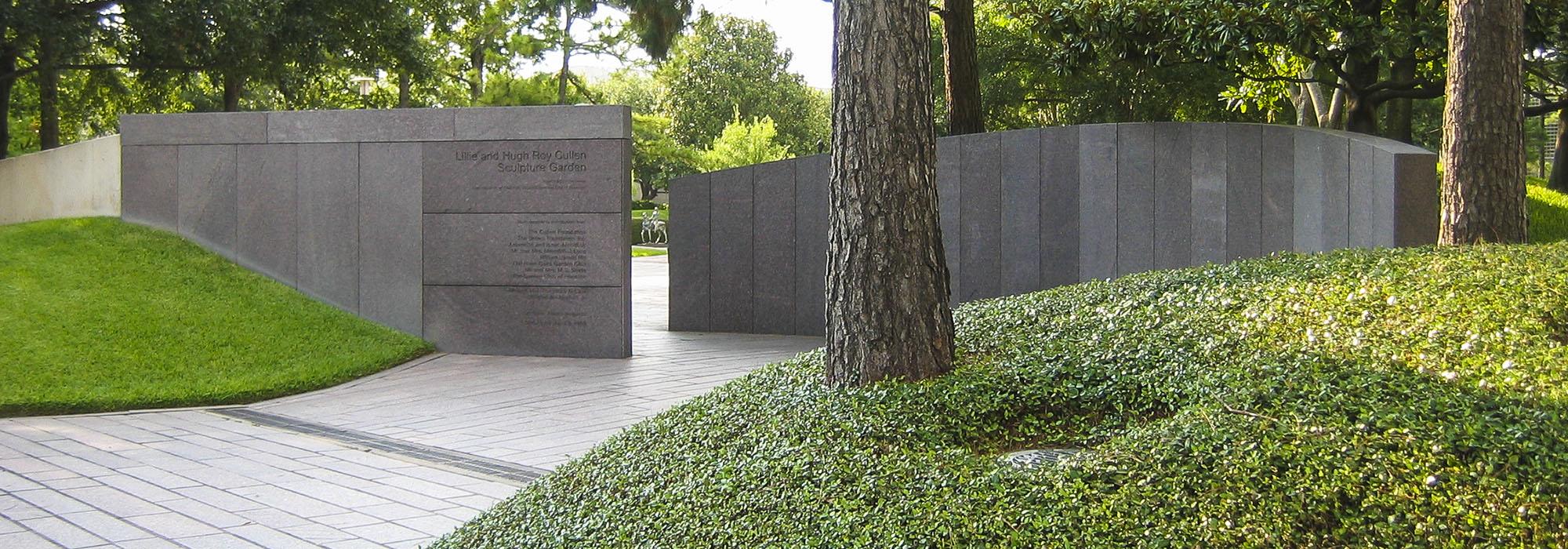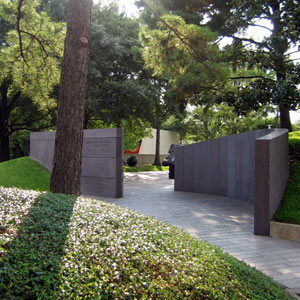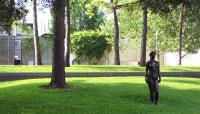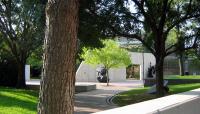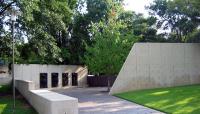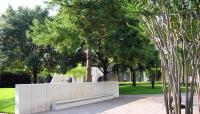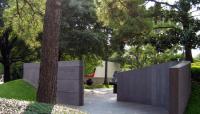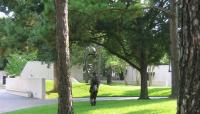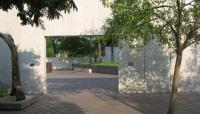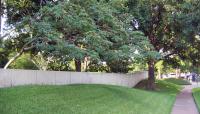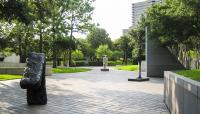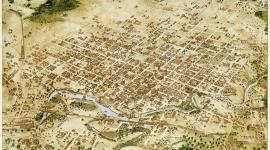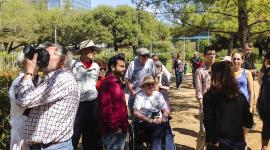Landscape Information
With funding from the Brown Foundation, the Museum of Fine Arts, Houston, purchased two city blocks in 1969 to create a sculpture garden. The following year, museum trustee and benefactor Alice Pratt Brown visited the Billy Rose Art Garden at the Israel Museum in Jerusalem and was inspired to have a similar sculpture garden in Houston.
Six years later Noguchi made his first site visit and over the next several years, with assistance from architect Shoji Sadao, made numerous design proposals. Following extensive public discourse, the project broke ground in 1984 and opened in 1986, the first U.S. sculpture garden by Noguchi specifically created to house the work of other artists.
For this 1.5-acre site situated directly across from the museum, Noguchi worked with Houston landscape architect Johnny Steele. As with the Israel Museum, the spatial organization was designed as a journey, offering varying perspectives and scales to view art. In both commissions, the idea was reinforced with freestanding walls, which in Houston focus the space inward. The garden’s design reflects Noguchi’s thought that “In the city, you have to have a new nature.”
The garden displays more than 25 works from the museum’s permanent collection and selected loans. It includes sculpture by Louise Bourgeois, Alexander Calder, Henri Matisse, David Smith, and Frank Stella; site-specific installations including Tony Cragg's New Forms and Ellsworth Kelly's Houston Triptych; and work by Texas artists, including Joseph Havel's Exhaling Pearls, Jim Love's Can Johnny Come Out And Play?, and Linda Ridgway's The Dance.



